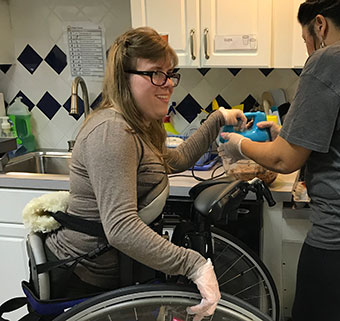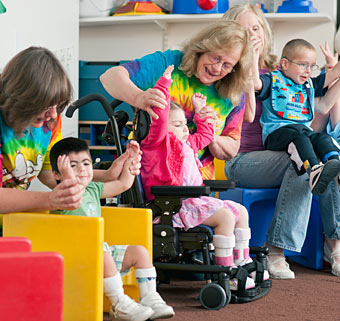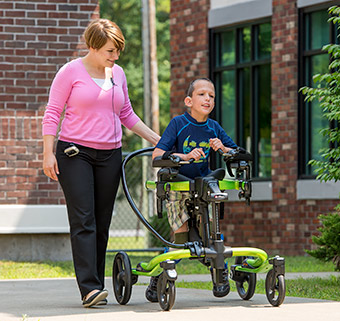Part 1: Why Goal Attainment Scaling?
An Explanation of Progress Monitoring
| July 2020 In March 2017, the Supreme Court ruled on the case of Endrew F. v. Douglas County School District. Endrew F. was a student with autism who for years had made only minimal educational gains under the IEP developed by his school, causing his parents to transfer him to a private school, where he made significant progress. His parents then sought reimbursement for the private school tuition, and appealed when reimbursement was denied.
In March 2017, the Supreme Court ruled on the case of Endrew F. v. Douglas County School District. Endrew F. was a student with autism who for years had made only minimal educational gains under the IEP developed by his school, causing his parents to transfer him to a private school, where he made significant progress. His parents then sought reimbursement for the private school tuition, and appealed when reimbursement was denied.
The Supreme Court ruling clarified the scope of the “free and appropriate public education” (FAPE), required under the Individuals with Disabilities Education Act (IDEA). Federal appeals courts had previously only required that schools provide an “educational benefit that is merely more than de minimis.”1“De minimus” is defined as a trivial and or minimal amount, and in this case is applied to a reasonably calculated Individual Education Plan (IEP) and a student’s progress in the learning environment.
The Court unanimously ruled that “de minimis” as a standard did not meet the substantive obligation under IDEA 2004; a school system must provide the student with an IEP that “is reasonably calculated to enable a child to make progress in light of their unique circumstances,” and to “have a chance to meet challenging objectives.”2 Endrew is important because it challenges us to apply more rigorous instruction/intervention strategies and outcomes for students with disabilities.
Equally as important is the Court’s interpretation of a “reasonably calculated IEP;” that the IEP is written with the “prospective judgment” of the IEP team. This ensures IEP decisions include the expertise of all team members including the parent, and that the IEP uses data on progress to date. This includes the effectiveness and student responsiveness to instructional strategies as well as other factors such as interfering behaviors and health conditions that may impact a student’s access.
It is clear that progress monitoring is critical to this process and the application of Endrew criteria.
Progress monitoring3 is essential to assess a student’s performance, quantify progress and assist the practitioner with making necessary modifications to interventions if the student is not progressing as hoped, he/she would.
As part of the IEP process, teams should discuss student goals along with the data collection/progress monitoring strategies, which includes how often data will be collected and by whom. Failure to identify progress monitoring procedures and report on progress can indicate a less than ambitious IEP and a denial of FAPE.4
Key to the success of the progress monitoring process is selecting a strategy that allows for efficient and user-friendly data collection that ensures collection of data with fidelity.4 Many school-based therapists work with students who have significant cognitive disabilities and/or are medically complex, and who therefore are instructed using an alternative curriculum. With these students, progress monitoring, responsiveness to intervention and implementing a reasonably calculated IEP may prove challenging.
For these students, progress may be so incremental that an outcome measure may not have captured any progress toward the achievement of a goal, even if there is a change in the amount of adult assistance a student may need. That said, the team still remains responsible for providing the student with an IEP that is “appropriately ambitious” and that offers “the chance to meet challenging objectives.”
An excellent strategy to address this challenge is Goal Attainment Scaling or GAS.5 Originally developed in the 1960s by Kireskuk and Sherman to evaluate mental health patients, it has emerged as a methodology to address the need for individualized assessment.6 Since then GAS, has expanded its use into several fields including pediatric therapy7 and rehabilitation.8
See Part 2: What Is Goal Attainment Scaling? and Part 3: The Application of GAS to the IEP Process.
References
- Roberts, John G. Unanimous decision. Supreme Court of the United States. Endrew F. v. Douglas County School District. 22 March 2017. Supreme Court of the United States, https://www.supremecourt.gov/opinions/16pdf/15-827_0pm1.pdf.
- S. Department of Education Questions and Answers on U.S. Supreme Court Decision Endrew F vs. Douglas County School District Re-1 Retrieved March 23, 2020 from https://sites.ed.gov/idea/files/qa-endrewcase-12-07-2017.pdf.
- Yell, M., Katsiyannis, A., Ennis, R., Losinski, M. and Christle, C., (2016). Avoiding Substantive Errors in Individualized Education Program Development. Teaching Exceptional Children. 49(1):31-40. Abstract https://eric.ed.gov/?id=EJ1118429.
- Progress Monitoring, (n.d.) National Center on Intensive Intervention at American Institutes for Research. Retrieved March 23, 2020 from https://intensiveintervention.org/intensive-intervention/progress-monitor.
- Kiresuk, T.J., Smith, A., and Cardillo, J.E. 1994. Goal Attainment Scaling: Applications, Theory, and Measurement. Hillsdale, NJ: Lawrence Erlbaum Associates.
- Kiresuk T.J. and Sherman R.E. (1968). Goal Attainment Scaling: A general method for evaluating comprehensive community mental health programs. Community Mental Health Journal, 4(6), 443–453. Free Full Text (copy/paste url into browser) https://www.researchgate.net/publication/258253290.
- McDougall, J. and King, G. (2007) Goal Attainment Scaling: Description, Application and Utility in Pediatric Therapy Services. 2nd Thames Valley Children Services. Available at: https://mississaugahalton.rehabcareontario.ca.
- Turner-Stokes, L. (2009). Goal attainment scaling (GAS) in rehabilitation: a practical guide. Clin Rehabil. 23(4):362-. Free Full Text https://www.researchgate.net/publication/23959454.







